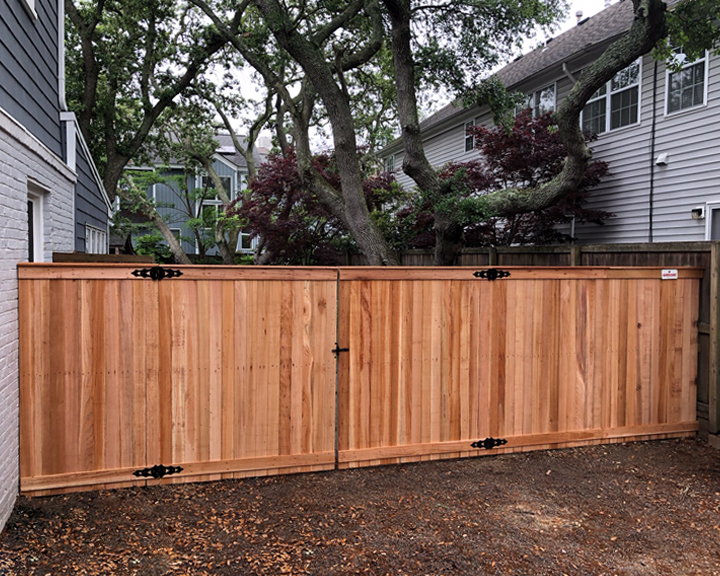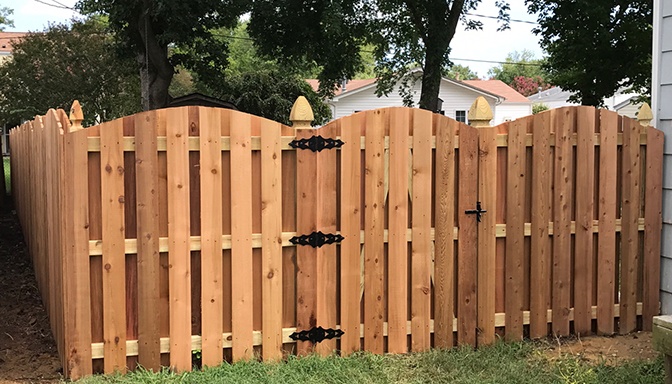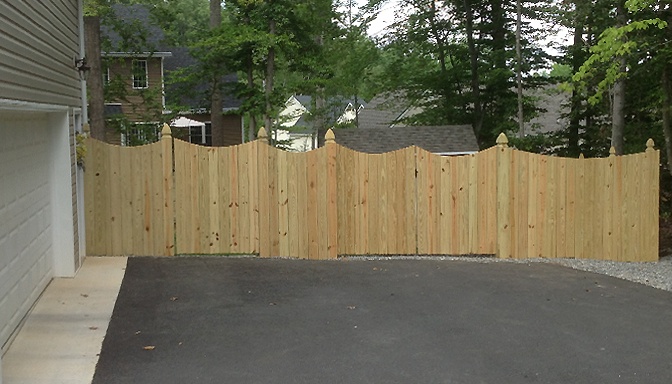| Wood fences have long been a popular choice for homeowners, admired for their natural beauty and versatility. While modern options like PVC (vinyl) fences can simulate the appearance of wood, there’s nothing quite like the authentic look and feel of natural materials. In Virginia, two types of wood dominate the residential fencing market: cedar and pressure-treated pine. Each material offers unique advantages, and understanding the differences is essential when deciding which is best for your fence project. In this guide, we’ll delve into the characteristics of cedar and pressure-treated wood, helping you weigh the pros and cons of a cedar vs pressure treated fence. | Why Cedar and Pressure Treated Wood Are Popular Choices Nearly 80% of all wood fencing is made from either cedar or pressure-treated pine. These materials are widely available, cost-effective, and suitable for a variety of fence styles, including privacy fences, picket fences, and decorative designs. Cedar Fences: Timeless Beauty and Natural Durability Cedar wood comes from red cedar trees, which are native to the American Northwest and Canada. This material is prized for its: - Straight, tight grain: Cedar’s fine grain and minimal knots make it both strong and visually appealing.
- Natural resistance to decay: Cedar contains oils and compounds that act as natural preservatives, reducing the risk of rotting.
- Stability: Unlike many other wood types, cedar resists warping, shrinking, and splitting, even in extreme weather conditions.
- Aromatic qualities: Cedar’s distinctive woodsy aroma not only smells great but also acts as a natural insect deterrent.
Cedar fences can last for decades when properly maintained, and their elegant red hue adds a warm, sophisticated touch to any property. Cedar Posts: A Consideration for Longevity While cedar is naturally resistant to decay, its posts can be vulnerable to soil erosion over time. This is why many homeowners opt for a hybrid solution: using pressure-treated pine for fence posts and cedar for the pickets and rails. Another alternative is setting cedar posts in concrete to further protect them from soil-related deterioration. Pressure Treated Pine Fences: Affordable and Resilient Pressure-treated wood (PTP) is the go-to material for many outdoor structures, including decks, porches, and fences. It is especially popular for its affordability and resistance to pests and weathering. What Makes Pressure Treated Pine Unique? Pressure-treated wood is infused with chemicals to enhance its durability. This treatment protects the wood from: - Decay: Chemical preservatives prevent rotting caused by moisture and fungi.
- Termites: Pressure-treated wood is highly resistant to insect damage.
- Weathering: It stands up well against rain, sun, and wind, although regular maintenance is needed to maintain its appearance.
The Challenges of Pressure Treated Pine While pressure-treated pine has many benefits, it does have some downsides: - Prone to warping and cracking: PTP can shrink and develop cracks over time, particularly if it is not properly cared for.
- Higher maintenance requirements: To prevent rot and maintain its aesthetic appeal, pressure-treated fences need to be stained and sealed about six weeks after installation.
- Routine upkeep, including cleaning, moistening, and resealing, is crucial to extend its lifespan.
|
 Cedar vs Pressure Treated Fence: Comparing Costs and Maintenance When comparing a cedar vs pressure treated fence, one of the most significant differences lies in their cost and maintenance needs. Cost Cedar is considered a premium wood fencing material, which makes it more expensive than pressure-treated pine. However, many homeowners view cedar as a worthwhile investment due to its long lifespan, minimal maintenance requirements, and timeless beauty. Pressure-treated pine, on the other hand, is more budget-friendly upfront. This makes it an attractive option for homeowners seeking a cost-effective solution. Keep in mind, though, that the ongoing maintenance costs for PTP can add up over time. Maintenance Cedar fences require relatively little maintenance. While they benefit from occasional cleaning and sealing, cedar’s natural oils make it inherently resistant to decay and insects. Pressure-treated pine fences demand more consistent attention. To keep them looking their best, homeowners should follow these maintenance tips: - Stain and seal the wood after installation.
- Regularly clean and strip dirt or mildew buildup.
- Keep the wood moist during hot weather to prevent cracking.
| 
Two Cedar privacy fence options - Left: 6 ft. cedar privacy fence with clear posts / Right: 6 ft. cedar Shadowbox privacy fence
| Which Fence Material Is Right for You? Choosing between a cedar vs pressure treated fence ultimately depends on your priorities. Here are a few scenarios to consider: Choose Cedar If: - You value long-term durability and minimal maintenance.
- You want a fence with natural beauty and a pleasant aroma.
- You’re willing to invest more upfront for a premium material.
Choose Pressure Treated Pine If: - You’re looking for an affordable fencing option.
- You don’t mind regular upkeep to maintain the wood’s appearance and integrity.
- You want durable posts that can withstand soil contact without rotting.
|





